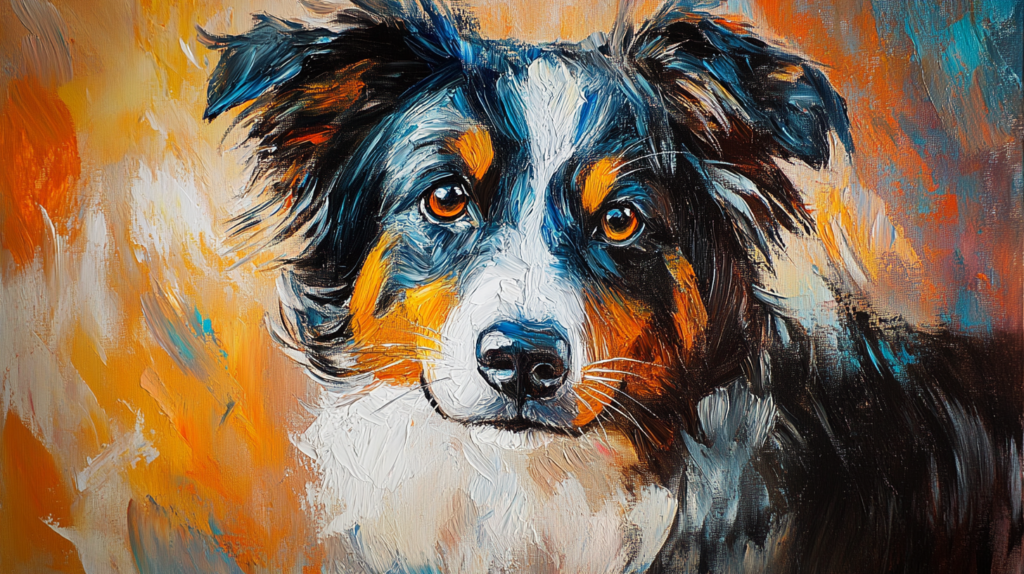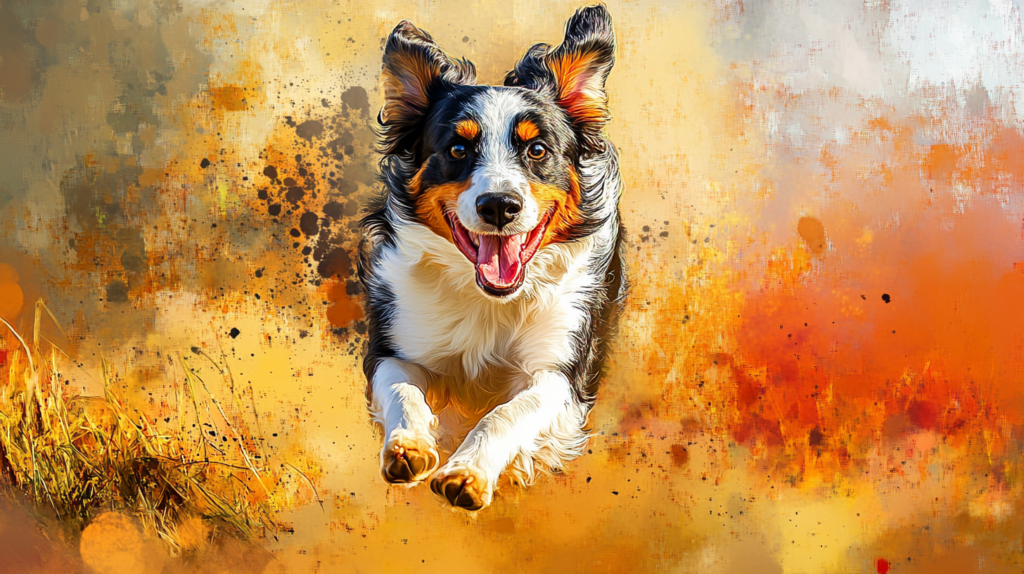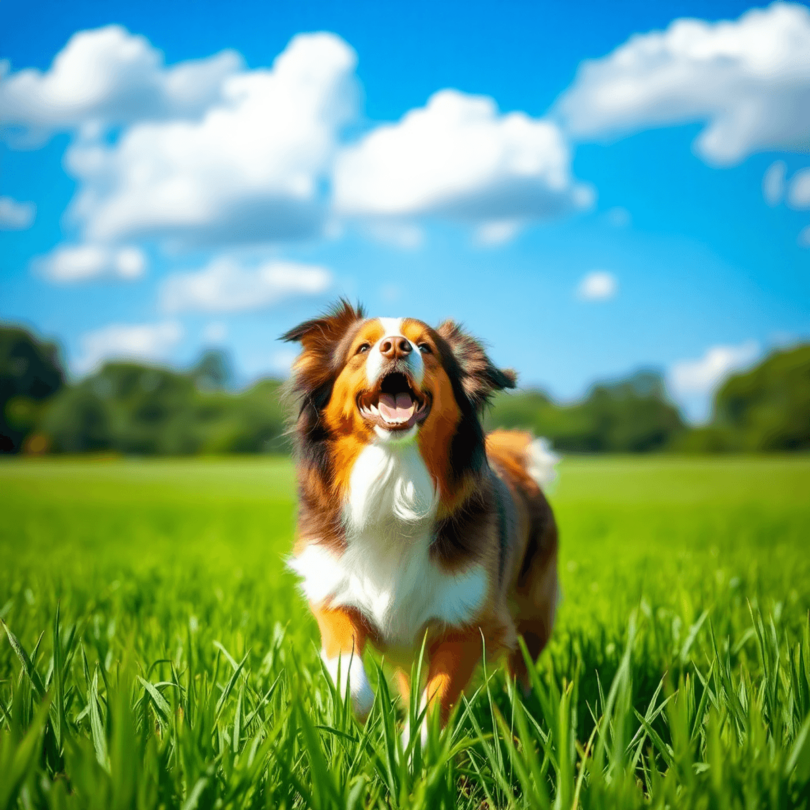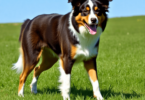Australian Shepherd (Aussie): The Complete Breed Guide
The Australian Shepherd, affectionately known as the Aussie dog, is a lively and intelligent companion. This breed was originally developed in the United States, but its ancestors are European herding dogs. Despite the name, these remarkable pups are not from Australia at all. Instead, they were named after the Australian sheepdogs that were imported to America.
If you’re considering bringing an Australian Shepherd into your family, it’s important to understand their characteristics. With their boundless energy, unique appearance, and strong work ethic, they require special attention to thrive in a family environment. By recognizing their needs, you can create a fulfilling partnership with your furry friend.
This guide is here to help you learn more about the Australian Shepherd breed. Inside, you’ll find information on their history, physical traits, temperament, exercise needs, grooming requirements, and much more. Whether you’re a first-time dog owner or an experienced handler, this Australian Shepherd breed guide will provide you with the knowledge you need to make informed decisions about welcoming an Aussie into your home!

History of the Australian Shepherd
The Australian Shepherd has a fascinating history that traces back to its European herding dog ancestors. While often associated with Australia, this breed actually originated in the United States during the 19th century. The Aussie dog breed was developed primarily for herding livestock, drawing significant influence from European herding breeds such as the Basque Shepherd Dog and the Pyrenean Sheepdog. These breeds contributed to the Australian Shepherd’s unique traits, agility, and intelligence.
Name and Origin Misconceptions
Common misconceptions surround the breed’s name and origin. Many assume that Aussies hail from Australia due to their name; however, they were actually developed by American ranchers who needed a reliable herding companion. The term “Australian” refers to the sheepdogs brought from Australia to America, which played a role in shaping the breed we know today.
Size Variations
For those intrigued by Australian Shepherd basics, it’s worth noting that these dogs come in various sizes, including the Mini Australian Shepherd, which is a smaller version beloved by many. Understanding this historical context enriches our appreciation of this remarkable breed and sheds light on its evolving role as a cherished family pet.

Physical Characteristics
The Australian Shepherd is a medium-sized dog breed that has an interesting mix of physical features. They are 18 to 23 inches tall and weigh around 35 to 65 pounds, with a well-proportioned, athletic body ideal for their active lifestyle.
Coat Types and Colors
Aussies are known for their beautiful double coats, which come in a variety of colors:
- Black: A classic shade that can have white markings or copper points.
- Blue Merle: A striking pattern with a marbled effect, often showcasing gray and black swirls.
- Red: A warm hue that can also feature white markings and copper accents.
- Red Merle: Similar to blue merle but with reddish tones.
This variety not only adds to their beauty but also makes each Australian Shepherd uniquely captivating.
Unique Features
One of the most charming aspects of this breed is heterochromia, where an Aussie may have two different colored eyes. This genetic trait enhances their captivating appearance and makes them stand out even more in a crowd. These remarkable features, combined with their energetic nature, make the Australian Shepherd an enchanting companion.

Temperament and Personality Traits of Australian Shepherds
The Australian Shepherd is not just a pretty face; this breed is renowned for its intelligent and energetic personality. Here’s what you can expect:
1. Intelligence & Eagerness to Please
Often recognized among the top of intelligent dog breeds, Aussies thrive on learning new tasks and commands. Their quick wit allows them to adapt to various activities, making training sessions a breeze.
2. Boundless Energy
These dogs are bursting with energy, requiring plenty of exercise and mental stimulation. Engaging them in herding activities or dog sports keeps their minds sharp and bodies active.
3. Socialization Importance
Early socialization is key for a well-rounded pet. Exposing your Aussie to different environments, people, and other animals helps cultivate their friendly and adaptable nature. This is crucial for developing their social skills and confidence.
4. Interaction with Family
Australian Shepherds are known to be a loyal dog breed, forming strong bonds with their families. They typically get along well with children and other pets when properly socialized from a young age, making them an excellent addition to an active household.
Embracing the unique temperament of the Australian Shepherd can lead to a rewarding companionship filled with fun adventures!

Exercise and Mental Stimulation Needs of Australian Shepherds
Australian Shepherds are high energy dogs that thrive on activity. To keep them happy and healthy, they require more than just two hours of exercise daily. This can include:
- Long walks or runs to burn off energy
- Play sessions with interactive toys
- Fetch games in the yard
Their intelligence demands more than just physical activity; mental stimulation is equally crucial. Engaging activities that challenge their minds include:
- Herding tasks, which tap into their natural instincts
- Dog sports like agility, flyball, or obedience competitions
- Puzzle toys that require problem-solving skills
It’s important to remember that while how much exercise is enough can vary, insufficient exercise can lead to undesirable behaviors. Without enough physical and mental outlets, an Australian Shepherd may become:
- Destructive, chewing furniture or digging up the yard
- Excessively vocal, barking out of boredom
- Anxious or restless, leading to stress-related issues
By meeting their exercise and mental stimulation needs – ideally around the optimal amount suggested for active dogs like the Border Collie – owners can enjoy the playful and loving nature of these remarkable companions while avoiding behavioral problems.

Common Health Concerns in Australian Shepherds and How to Manage Them Effectively
The Australian Shepherd is a strong breed, but like all dogs, they can be prone to certain health issues. Knowing about these concerns allows for proactive management and care. Here are some common health issues in Australian Shepherds:
1. Hip Dysplasia
A genetic condition where the hip joint doesn’t fit into the hip socket properly. This can lead to arthritis and pain, especially as the dog gets older.
2. Progressive Retinal Atrophy (PRA)
A degenerative eye condition that can result in blindness. Early symptoms may include night blindness and overall vision deterioration.
In addition to these conditions, Australian Shepherds may carry a genetic predisposition known as the MDR1 gene mutation. This mutation affects drug metabolism, making certain medications toxic to them.
Regular veterinary check-ups play a vital role in early detection and management of these health concerns. Routine examinations can help monitor your Aussie’s weight, joint health, and eye function, ensuring they maintain their spirited lifestyle. Keeping vaccinations up-to-date and discussing any behavioral changes with your veterinarian will also contribute to a long and healthy life for your furry companion.

Care and Grooming Requirements for Australian Shepherds: Keeping Their Double Coat Healthy
Caring for an Australian Shepherd’s luscious double coat is vital for their health and appearance. Here are some essential grooming tips for Australian Shepherds to keep in mind:
1. Brushing Frequency
Their double coat requires regular attention. Aim to brush your Aussie at least once a week, with increased frequency during shedding seasons (spring and fall). This helps minimize mats and tangles while keeping loose fur under control.
2. Managing Shedding Patterns
Australian Shepherds shed year-round, but you might notice heavier shedding during seasonal changes. To combat this, utilize de-shedding tools designed for medium-length fur. Regular brushing not only keeps the coat manageable but also distributes natural oils, promoting a healthy shine.
3. Bathing Recommendations
Bathing should be done sparingly—about every 2 to 3 months or as needed. Use a gentle dog shampoo to prevent stripping their coat of essential oils. Always make sure to rinse thoroughly to avoid skin irritations.
Keeping their coat in tip-top shape contributes significantly to your Australian Shepherd’s overall well-being, ensuring they look fabulous while remaining comfortable in their skin.

Training Tips for Australian Shepherd Owners: Harnessing Their Intelligence
Training an Australian Shepherd is a rewarding adventure! These intelligent pups thrive on mental challenges and early training sets the stage for a well-behaved companion. Here are some essential tips:
1. Start Early
Introduce basic commands and socialization when your Aussie is a puppy. This helps them adapt to various environments and reduces behavioral issues.
2. Positive Reinforcement
Use treats, praise, and playtime as rewards. This method encourages your dog to repeat desired behaviors, making training fun and effective.
3. Keep Sessions Short
Aim for short, engaging training sessions of 5-10 minutes to hold their attention. Multiple sessions throughout the day can be more beneficial than one long session.
4. Incorporate Play
Combine training with games like fetch or hide-and-seek to keep your Aussie excited and engaged.
5. Seek Resources
Look for local obedience classes, online tutorials, or books focused on dog training tips specific to intelligent breeds. Networking with fellow Aussie owners can also provide valuable insights.
Remember, patience and consistency are key elements in training your Australian Shepherd. Embrace their playful spirit while guiding them through the learning process!

Pros and Cons of Owning an Australian Shepherd: A Balanced Perspective
When considering the pros and cons of Australian Shepherds, it’s essential to evaluate both their delightful traits and challenging demands.
Advantages:
- Intelligence: This breed is known for its sharp mind, making training a rewarding experience. They can learn commands quickly and excel in dog sports.
- Loyalty: Australian Shepherds form strong bonds with their families, often becoming protective and devoted companions.
- Versatility: These dogs thrive in various roles, from herding to competing in agility trials, showcasing their adaptability.
Disadvantages:
- High Energy Needs: With a requirement for over two hours of exercise daily, their energetic nature may overwhelm some owners. Lack of physical activity can lead to boredom and behavioral issues.
- Time Commitment: Socialization and training require consistent effort. Busy lifestyles may not accommodate the attention these dogs need to flourish.
Ideal Owner Profile:
Australian Shepherds are best suited for active individuals or families who can dedicate time for exercise, training, and mental stimulation. Those familiar with dog ownership or willing to invest in learning about the breed will find a loyal friend in this dynamic pup.
Aussie as a Family Pet
Australian Shepherds thrive in family environments, bringing joy and energy that can enrich any household. Their sociable nature makes them exceptional companions for both children and adults. Here are some reasons why Aussies shine as family pets:
1. Playfulness
They have boundless energy, always ready for a game of fetch or a romp in the yard. This enthusiasm fosters strong bonds with family members.
2. Protective Instincts
With their herding background, Aussies tend to be protective of their families. They naturally watch over loved ones, providing an extra layer of security.
3. Adaptability
These dogs can adjust to various living situations, whether in a spacious home or a smaller apartment, as long as they receive adequate exercise.
Socialization plays a crucial role in their development. Introducing them to new experiences, people, and other animals ensures they grow into well-rounded companions. When properly socialized, Australian Shepherds typically exhibit patience and gentleness with younger kids.
Their intelligence and eagerness to please make training enjoyable and effective. Engaging them in family activities or training sessions not only stimulates their minds but also strengthens the family bond. Families ready to dedicate time to these energetic pups will find that an Aussie is much more than just a pet; they become an integral part of the family!

Assessing If an Australian Shepherd Is Right For You: Key Considerations Before Making a Decision
Thinking about adding an Australian Shepherd to your family? It’s crucial to consider whether this breed aligns with your lifestyle. Here are some essential points to ponder:
- Exercise Requirements: These energetic pups need more than two hours of exercise daily. If you’re an active individual or family who enjoys outdoor activities, you might just be a match made in heaven!
- Time Commitment: Training and socialization are vital for Australians. Be prepared to dedicate time for mental stimulation through activities like obedience training or dog sports.
- Living Environment: Spacious homes with yards are ideal, but apartment dwellers can make it work too—provided they commit to frequent, vigorous walks and playtime.
For first-time dog owners, the Australian Shepherd may present challenges due to their high energy and intelligence. They thrive with experienced handlers who can provide the necessary guidance and structure.
Ask yourself: Is an Australian Shepherd right for me? If you find that your lifestyle reflects their needs, an Aussie could bring boundless joy and companionship into your life!
Conclusion: Making an Informed Choice About Owning An Aussie!
Choosing an Australian Shepherd is an exciting decision that comes with many rewards. Understanding the unique traits of this breed will help you determine if they’re the right fit for your lifestyle. Here’s a quick summary of what makes Aussies so special:
- Intelligent: Quick learners who thrive on mental challenges.
- Energetic: Require over two hours of exercise daily to stay happy and healthy.
- Affectionate: Known for their loyalty and strong bonds with families.
- Sociable: Generally great with children and other pets when properly socialized.
If you’re ready to embrace a life filled with activity, playful antics, and unwavering companionship, the Australian Shepherd could be your perfect match. Remember to consider your time commitment and energy level before bringing home this vibrant breed.
Owning an Aussie not only means having a furry friend but also gaining a partner in adventure. Make sure you’re prepared to meet their needs for physical and mental stimulation. With the right environment, an Aussie can fill your life with joy, laughter, and love.

FAQs (Frequently Asked Questions)
What are the key characteristics of the Australian Shepherd breed?
The Australian Shepherd is a medium-sized dog known for its intelligence, loyalty, and energetic nature. They typically stand between 18 to 23 inches tall and weigh between 35 to 65 pounds. Their coat can come in various colors, including black, blue merle, and red, and they may exhibit unique features such as heterochromia.
What is the history behind the Australian Shepherd breed?
The Australian Shepherd’s history is influenced by European herding dogs, particularly breeds like the Basque Shepherd Dog and Pyrenean Sheepdog. Despite its name, the breed did not originate in Australia but was developed in the United States for herding purposes. There are also Mini Australian Shepherds that have emerged from this lineage.
What are the exercise and mental stimulation needs of an Australian Shepherd?
Australian Shepherds are high-energy dogs that require more than two hours of exercise daily. Activities such as herding tasks and dog sports provide essential mental stimulation. Insufficient exercise can lead to behavioral issues due to pent-up energy.
What common health concerns should I be aware of with Australian Shepherds?
Common health concerns for Australian Shepherds include hip dysplasia and progressive retinal atrophy. Additionally, they may carry a genetic predisposition related to the MDR1 gene mutation. Regular veterinary check-ups are crucial for early detection and management of these health issues.
How should I care for and groom my Australian Shepherd?
Australian Shepherds have a double coat that requires regular grooming to manage shedding throughout the year. It’s recommended to brush their coat frequently to keep it healthy and clean. Bathing should be done as needed based on their activity level and exposure to dirt.
Is an Australian Shepherd a suitable family pet?
Yes, Australian Shepherds can make excellent family pets due to their loyalty and intelligence. However, potential owners should assess their lifestyle compatibility with the breed’s needs, particularly regarding exercise levels and time commitment required for training and socialization.






